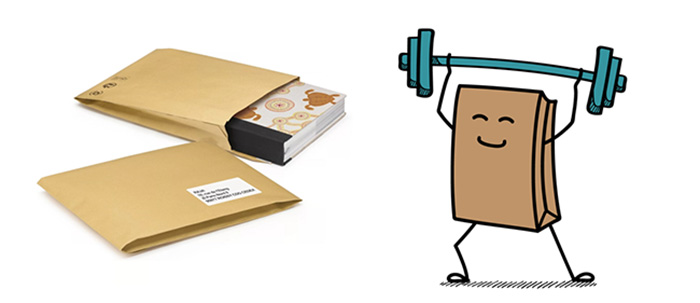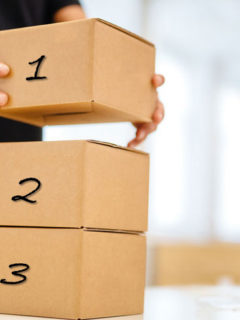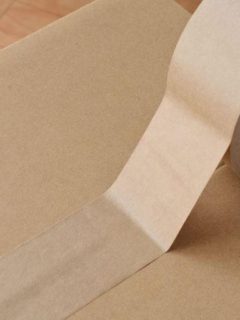E-commerce is growing at lightning speed Consumers are becoming more aware of eco-friendly packaging… No wonder, then, that paper shipping bags are gaining in popularity and are increasingly used as an alternative to plastic shipping bags. In this selection guide, you will discover how to choose the right paper mailing envelope for your products. Big, small, thick or thin? There is a perfect tailor-made bag for every product.
1. What advantages do paper shipping bags have?
A paper shipping bag has many more advantages in store than you might think. Sustainability and ecology are not the only protagonists here. They also clearly excel in terms of strength, ease of use and so much more….
View our full range of shipping bags here► 1.1 Environmental friendliness
Paper mailing envelopes are an eco-friendly alternative to plastic bags. Because they are made of paper, a renewable material, they put less strain on our resources. Moreover, the recipient of your shipments can easily dispose of this recyclable packaging in the paper bin. Some variants even feature a return closure so that the customer can easily reuse them and does not need tape again.
Besides, shipping bags are generally much better for the environment than, say, a shipping box. You can flatten them completely, saving maximum space and reducing the amount of air at the ‘last mile’. So this compact packaging does not need any padding material, reduces weight during transport and, finally, creates more space in a van.
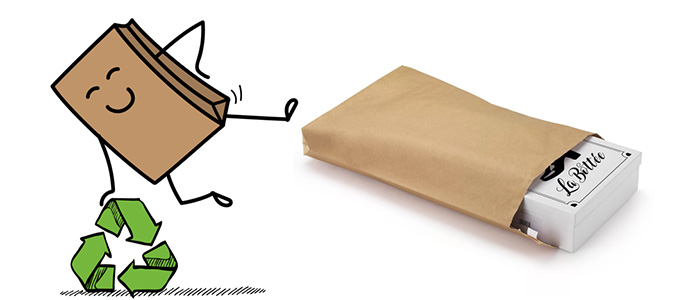
► 1.2 Image
Consumers are becoming increasingly aware of how a product is packaged. So paper packaging is going to do wonders for the sustainable image of a brand or company. But even there, the story continues. Paper shipping bags can often be personalised with your brand name for a professional image. A paper envelope also has a luxurious look as shipping packaging, and that goes double if the brand is stylishly printed on the bag.
► 1.3 Discretion
The paper envelope hides the contents of the shipping bag from prying eyes and discourages thieves from stealing the shipment. While not every plastic bag is opaque, we can say that about every paper shipping envelope.
► 1.4 Protection
In terms of protection, too, we can call paper shipping bags a real alternative to plastic. Is your mailing bag made of kraft paper? Then it is extra resistant to moisture and tearing. Incidentally, some variants have several layers of paper or even a layer of bubble wrap inside. These layers of kraft and batting paper are particularly good at absorbing shocks.
► 1.5 Time and cost savings
On the one hand, paper (and plastic) shipping envelopes are particularly light, making them easier to fit in a loading space and allowing you to avoid extra transport costs. Since the envelopes do not require any padding material, you can also save on these packaging costs.
On the other hand, no time is lost in packing and sealing the bags thanks to the adhesive strip integrated into the flap on many variants. So you no longer lose time with tape or adhesive tape. You can simply pull off the adhesive strip, close it and move on to the next order. Super simple!
]2. Which paper shipping bags do you choose?
When choosing the right paper e-commerce bag, it is important to always match it to the product you want to ship. First, you determine how fragile your product is. Then you look at more specific properties such as the size, weight or foldability of the product. In our range of paper shipping envelopes, each package also has an integrated adhesive strip for faster and easier work at the packing table.
► 2.1 Shipping fragile products
For sending fragile products, it is best to use a padded or honeycomb envelope. These envelopes feature internal padding which, combined with the outer layers of kraft paper, absorb shocks particularly well during transport.
Padded envelope 65% recycled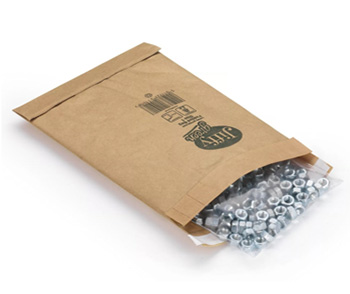 |
Padded envelope 100% recycled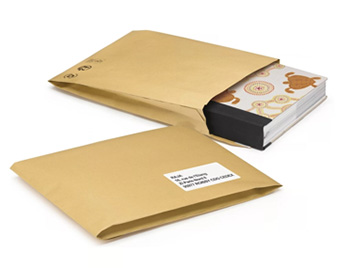 |
Honeycomb envelope . 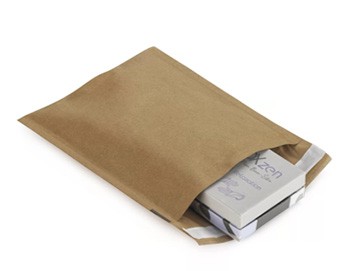 |
| – For heavier products – The softest protection* – Paper thickness: 165 g/m² |
– For larger products – Side gussets for more volume – Paper thickness: 250 g/m² |
– For extra fragile products – Max shock absorption – Paper thickness: 260 g/m² |
* Crushed paper up to 5 mm thick.
► 2.2 Sending slightly fragile products
For little fragile articles, you can rely on this selection. Here the focus is on shipping as efficiently as possible for products that need little extra protection such as textiles, clothing, fashion accessories or products that are already firmly packed. So these bags are also ideal for sending foldable products. Thanks to the larger bag sizes, you can also send larger items very easily.
| Dispatch sack with side folds 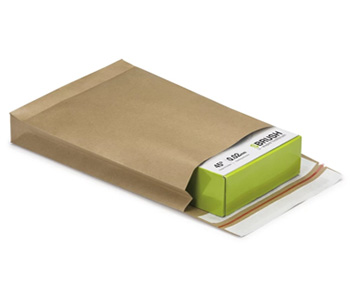 |
Dispatch sack With bottom fold  |
Strong shipping bag With return closure 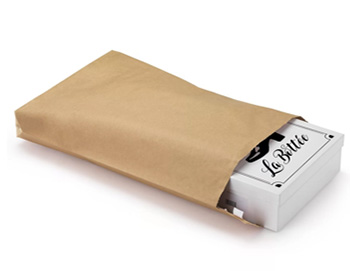 |
| – For bulky products – Side gussets for more volume – Smooth inside* – Second adhesive strip for returns – Paper thickness: 120 g/m² |
– For light and flexible products – Bottom fold for more volume – Water-repellent layer – Paper thickness: 125 g/m² |
– For bulky and heavier products – Smooth inside* – Wide bottom and seamless fold edges** – Second adhesive strip for returns – Paper thickness: 130 g/m² |
* Your products slide easily and smoothly into the envelope.
** The content and shipping capacity of the shipping bag are thus 100% utilised.
3. What do consumers think about paper packaging?
European organisation Pro Carton commissioned an independent survey across 11 different countries by Perspectus Global in 2021. A total of 7051 consumers were surveyed in Austria, France, Germany, Italy, Poland, Spain, Turkey, Belgium, the Netherlands, Luxembourg and the UK. The survey mapped consumers’ views on environmental and packaging issues, and what role COVID-19 plays in them. We list below the main conclusions related to paper packaging:
- More than 58% of consumers recycle more than before and buy less plastic packaging.
- 61% of consumers admit that their purchasing decisions are influenced by environmental impact.
- 79% choose cardboard, while only 9% went for plastic when given the choice between plastic or cardboard packaging.
- 93% of participants prefer a supermarket or retailer that proactively encourages suppliers to package in an environmentally friendly way vs a supermarket or retailer that does not.
- 65% claimed to have switched brands because they were concerned about packaging practices.
- More than 75% of all consumers surveyed are willing to pay more for packaging that has a smaller environmental impact.
